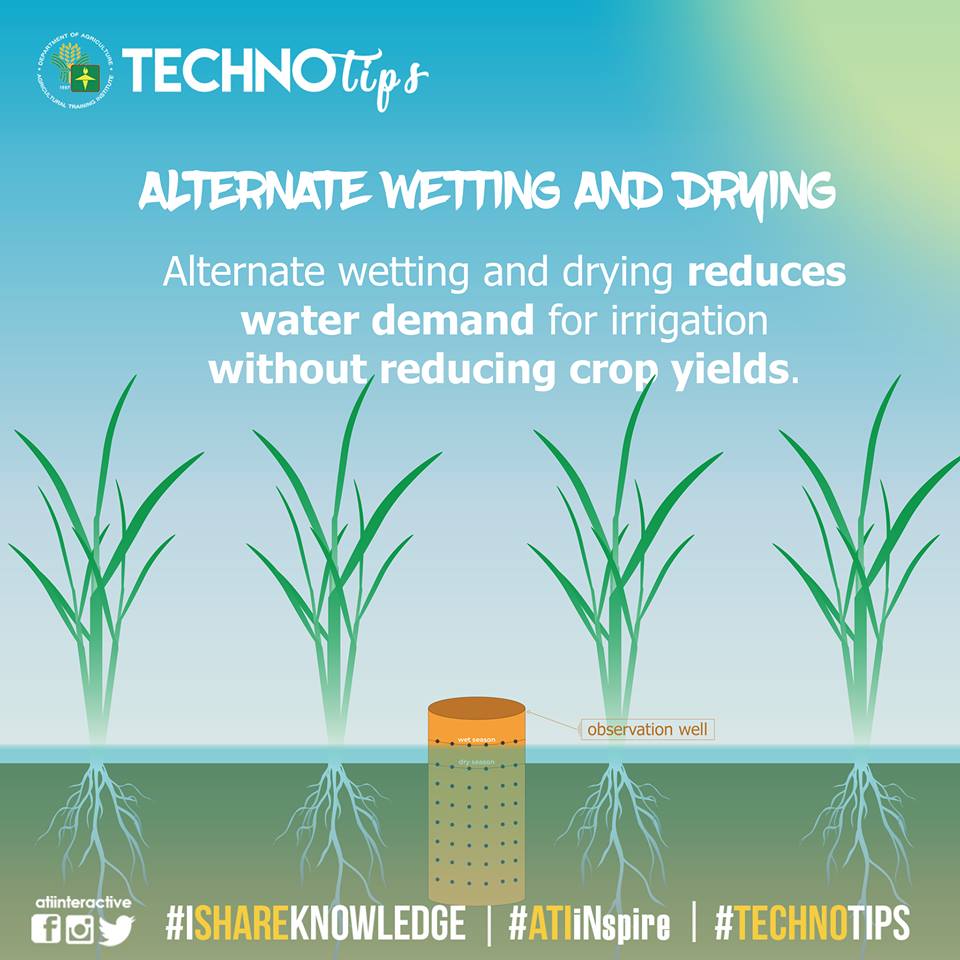Re: #TECHNOTIPS: Alternate Wetting and Drying | |
|
Alternate Wetting and Drying (AWD) is a water-saving technology that farmers can apply to reduce their irrigation water consumption in rice fields without decreasing its yield. In AWD, irrigation water is applied a few days after the disappearance of the ponded water. Hence, the field gets alternately flooded and non-flooded. The number of days of non-flooded soil between irrigations can vary from 1 to more than 10 days depending on the number of factors such as soil type, weather, and crop growth stage.
Automation can be done with the use of sensors. It is a good idea to have a relevant study about this so we can come up with a device to automatically advice the farmers when to flood and dry the fields. As compared to manual checking, automation can be a good avenue to facilitate better water management
Source:
Saving Water with Alternate Wetting Drying (AWD) |

 Alternate wetting and drying (AWD) reduces water used in rice production by 16-35% without affecting grain yield. It also increases the efficiency of plants in using soil nutrients and applied fertilizers.
Alternate wetting and drying (AWD) reduces water used in rice production by 16-35% without affecting grain yield. It also increases the efficiency of plants in using soil nutrients and applied fertilizers.



